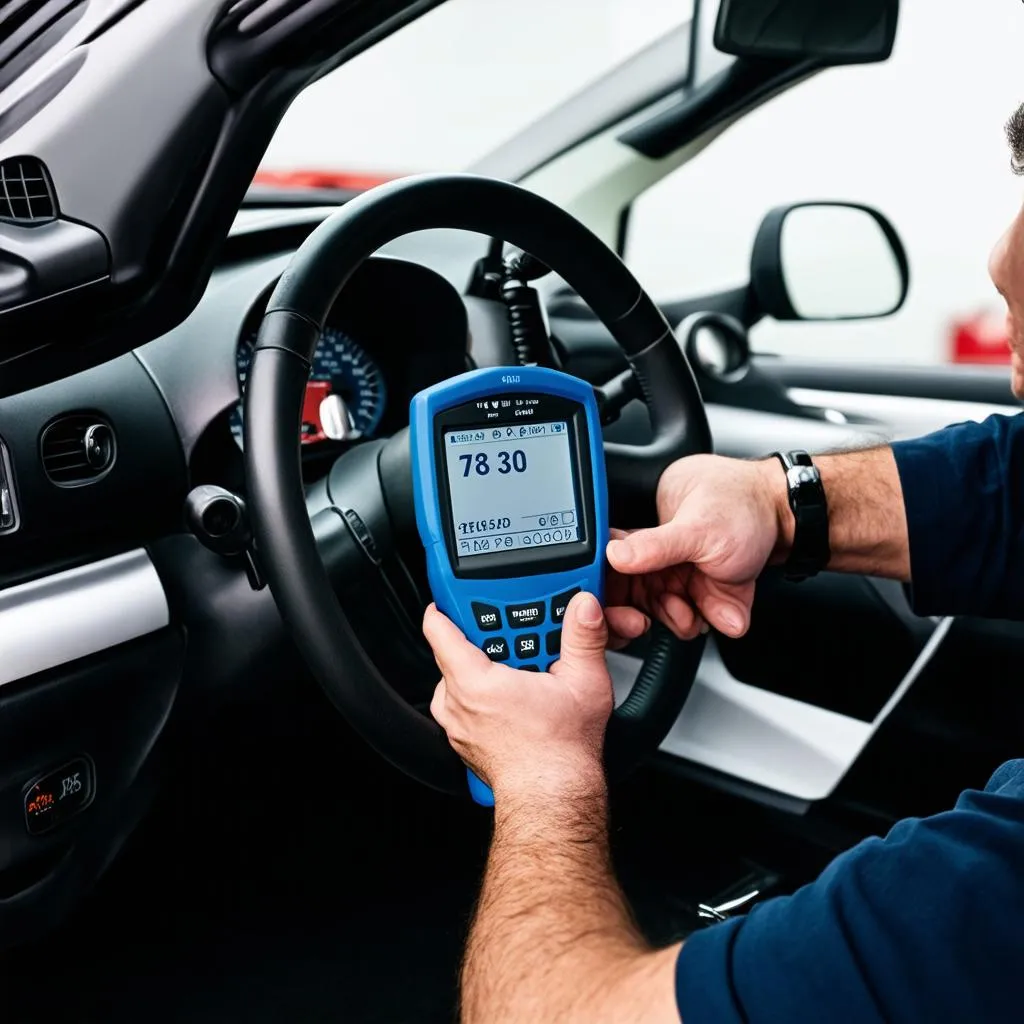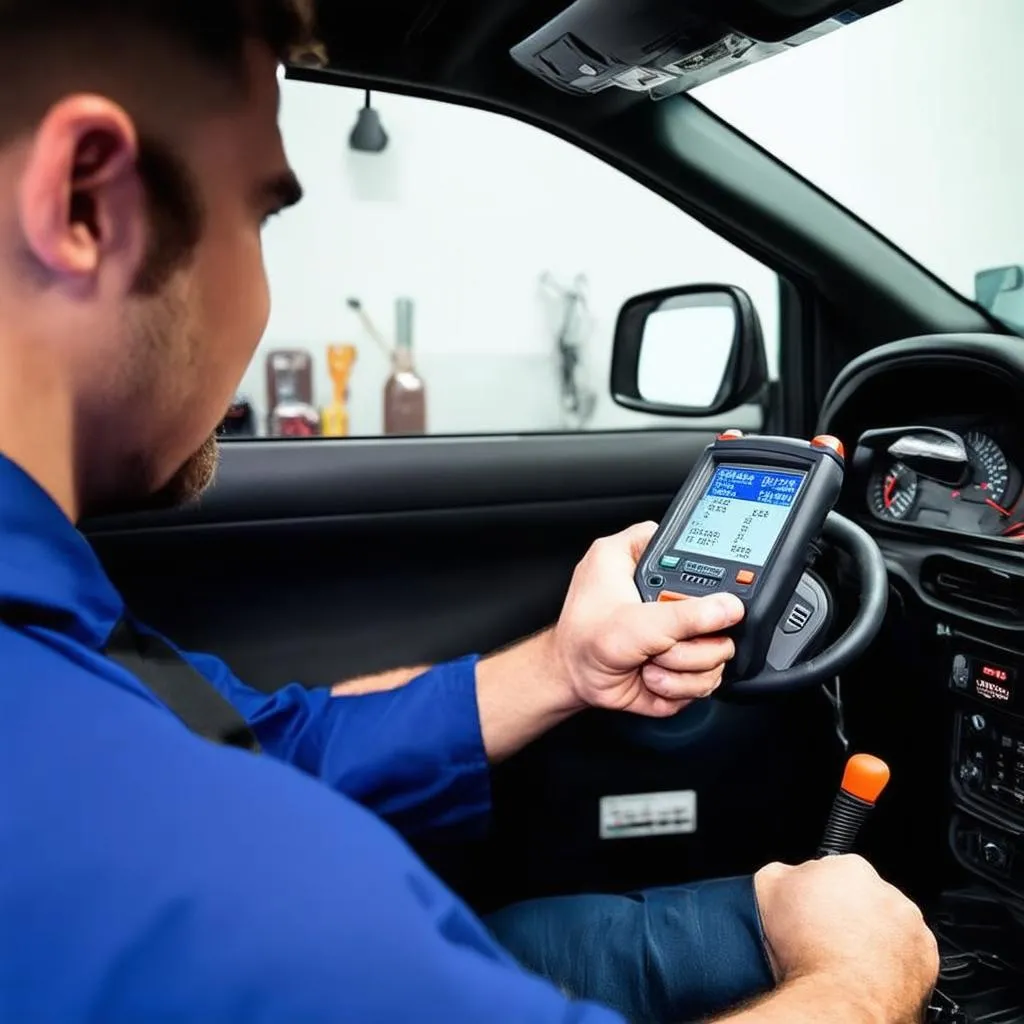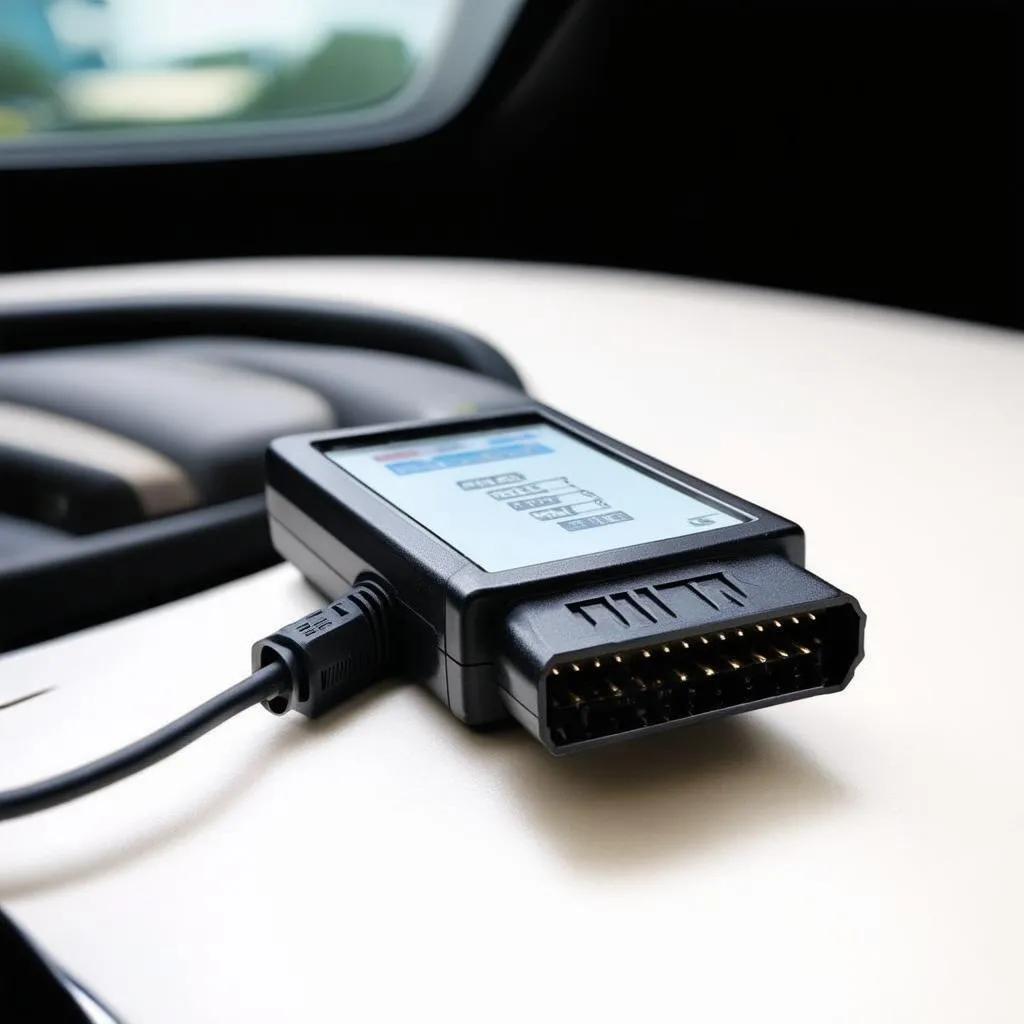Ever wondered what those cryptic codes mean when your car’s “Check Engine” light illuminates? You’re not alone. Many car owners find themselves baffled by these mysterious “Generic OBD2 DTCs,” leaving them feeling lost and frustrated.
What are Generic OBD2 DTCs?
Think of them as the car’s way of communicating with you. The “Check Engine” light is like a blinking red flag, alerting you to a problem. Generic OBD2 DTCs are the specific codes that provide valuable insights into the problem.
“OBD” stands for “On-Board Diagnostics,” a standardized system built into most modern vehicles manufactured since 1996. The system monitors various components and functions of your car, detecting potential issues and storing them as “Diagnostic Trouble Codes” (DTCs).
“Generic” refers to DTCs that are common across a wide range of vehicles. These codes are defined by the Society of Automotive Engineers (SAE) and are understood by all OBD2 scanners.
Diving Deeper: Understanding the Code Structure
Generic OBD2 DTCs follow a specific structure:
P – Indicates a powertrain-related DTC (referring to engine, transmission, or emissions)
C – Indicates a chassis-related DTC (referring to body control, braking, or steering)
B – Indicates a body-related DTC (referring to comfort, convenience, and accessories)
U – Indicates a network or communication-related DTC
First Digit: Represents the category of the problem.
Second Digit: Represents the specific system or component within the category.
Third and Fourth Digits: Represents the specific failure code.
The Power of Generic OBD2 DTCs
- Pinpointing the problem: These codes help identify the specific component or system causing the issue, simplifying troubleshooting.
- Saving time and money: By quickly diagnosing the problem, you can avoid unnecessary repairs and potentially save money.
- Maintaining vehicle performance: Addressing the underlying issue helps prevent further damage and maintain optimal vehicle performance.
Interpreting Generic OBD2 DTCs: An Example
Imagine you’re driving your car and the “Check Engine” light pops on. Using a simple OBD2 scanner, you read the code “P0171.”
Let’s break it down:
- P: Powertrain-related DTC
- 0: Fuel and air metering
- 171: System too lean (Bank 1)
This code suggests a problem with the fuel-air mixture in the engine, specifically on one side of the engine. It could be a faulty oxygen sensor, a clogged air filter, or even a fuel pressure issue.
Common Generic OBD2 DTCs
Here’s a breakdown of some frequently encountered DTCs:
P0171: System Too Lean (Bank 1) – This code indicates the engine is receiving too much air and not enough fuel, leading to an inefficient burn.
P0300: Random/Multiple Cylinder Misfire Detected – This code signifies that the engine is experiencing misfires in one or more cylinders.
P0420: Catalyst System Efficiency Below Threshold (Bank 1) – This code suggests the catalytic converter is not working properly, potentially due to a clogged converter or a leak in the exhaust system.
P0135: Oxygen Sensor Heater Circuit Malfunction (Bank 1 Sensor 1) – This code suggests a problem with the oxygen sensor’s heating element, which is essential for proper sensor operation.
P0123: Throttle Position Sensor (TPS) A Circuit High Input – This code indicates a problem with the throttle position sensor, a critical component in controlling the engine’s airflow.
Tips for Diagnosing Generic OBD2 DTCs
1. Consult a Repair Manual: A comprehensive repair manual specific to your car model will offer detailed information about each code, potential causes, and troubleshooting steps.
2. Use a Reliable OBD2 Scanner: Invest in a quality OBD2 scanner, not just a cheap one. A good scanner provides more accurate and detailed readings.
3. Perform Basic Checks: Before diving into complex repairs, perform some basic checks, such as checking the engine oil level, inspecting the air filter, and checking for loose connections.
4. Seek Professional Help: If you’re unsure about diagnosing or fixing the problem, consult a qualified mechanic.
The Importance of Understanding Generic OBD2 DTCs
Armed with this knowledge, you’re better equipped to understand what’s happening under the hood. Generic OBD2 DTCs offer a powerful window into your car’s health, enabling you to diagnose problems quickly, potentially save money on repairs, and keep your vehicle running smoothly.
 OBD2 Scanner for Car Repair
OBD2 Scanner for Car Repair
Frequently Asked Questions
Q1: Can I reset the “Check Engine” light myself?
Yes, but it’s not always recommended. Resetting the light doesn’t address the underlying issue. It simply clears the code. If the problem persists, the light will return.
Q2: What if I have a DTC that’s not listed in my repair manual?
Don’t panic! There are numerous online resources and forums where you can find explanations and solutions for specific DTCs. You can also consult with a qualified mechanic for professional guidance.
Q3: What’s the difference between a Generic OBD2 DTC and a Manufacturer-Specific DTC?
Generic OBD2 DTCs are universal codes that apply to all vehicles. Manufacturer-Specific DTCs are specific to a particular car brand or model.
Q4: Is there a relationship between OBD2 DTCs and car maintenance?
Absolutely. Regular car maintenance, such as oil changes, spark plug replacements, and air filter replacements, helps prevent many issues that can trigger DTCs.
Q5: Can a bad battery cause the “Check Engine” light to turn on?
It’s possible. A weak or failing battery can affect the electrical system’s stability, potentially triggering a DTC.
Explore Further
For more detailed information on specific OBD2 DTCs, explore our website for articles on various car models and their associated codes:
- 2008 Mercedes OBD Port
- Honda City 2006 OBD Port
- Honda OBD-II Protocol
- Difference Between OBD-I and OBD-II
- 1993 BMW 525i OBD Location
 Generic OBD2 DTC codes
Generic OBD2 DTC codes
Final Thoughts
Understanding generic OBD2 DTCs empowers you to take control of your car’s health. While the codes themselves might seem daunting at first, with a little knowledge and the right tools, you can decipher their meaning and gain valuable insights into your vehicle’s condition.
Remember, regular maintenance and proper troubleshooting are essential for a smooth and reliable driving experience.
If you need assistance with diagnostics tools or have any questions about your car’s electrical system, don’t hesitate to contact our team of expert automotive technicians. We’re available 24/7 to assist you.
Reach out via WhatsApp: +84767531508
 OBD2 Scanner Diagnostics
OBD2 Scanner Diagnostics